[ad_1]
Spiraea japonica
As an city farmer, I have a tendency to offer most of my consideration to food-producing vegetation. I’ve little time and power to commit to my ornamentals and I’ll admit that the poor issues usually undergo from borderline neglect.
Because of this, I select my decorative vegetation rigorously. They should go the “Tabitha check.” This implies they completely have to be low upkeep.
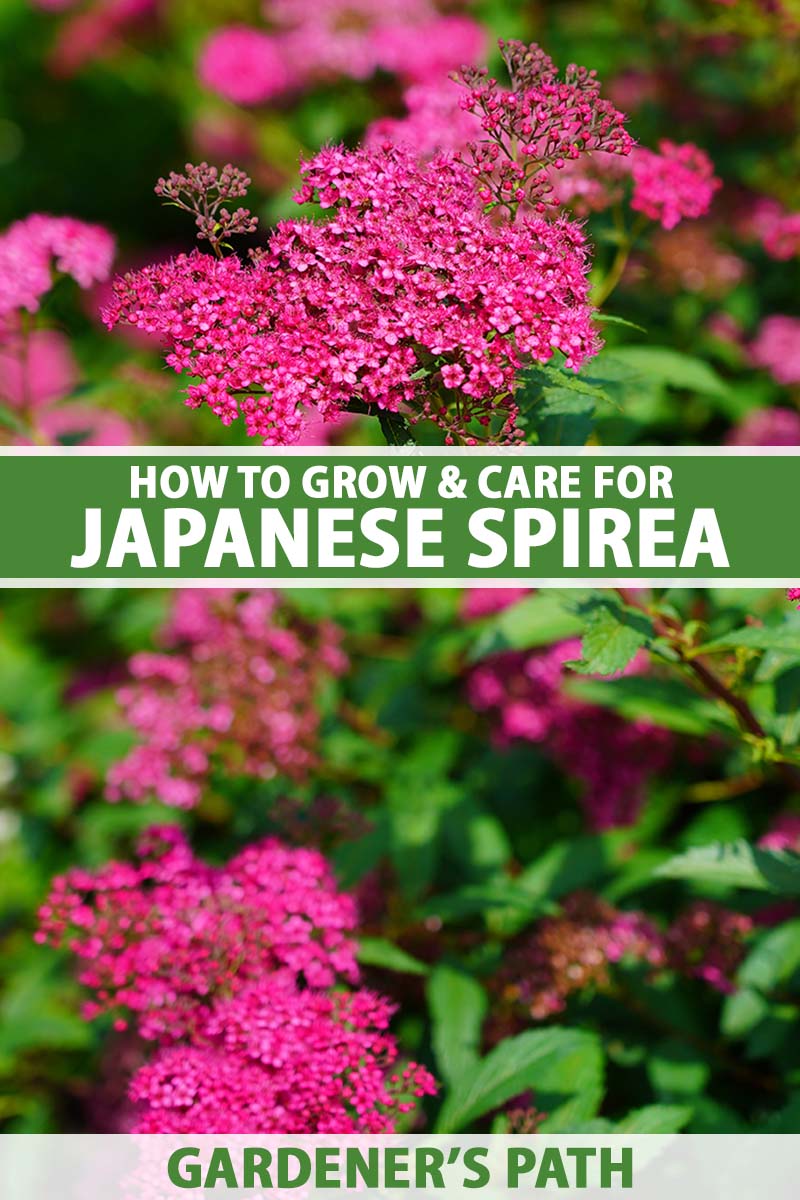
We hyperlink to distributors that will help you discover related merchandise. Should you purchase from one in all our hyperlinks, we could earn a fee.
The resilient Japanese spirea is one in all my go-to shrubs for when my backyard design whims get the most effective of me. You see, I’ve this unlucky behavior, some may name it a gardening quirk, of continually rearranging my vegetation.
It’s like a sport of musical chairs, however for shrubs. And Japanese spireas are by no means sore losers. They’re robust, resilient, and straightforward to look after. Even via all of the digging up and replanting, my Japanese spirea shrubs by no means maintain a grudge.
Should you’re searching for a plant that’s as forgiving as it’s lovely, you’ve come to the correct place.
This species belongs to the big Spiraea genus and you may learn extra about them in our complete rising information. Right here I’ll be focusing solely on the best way to develop Spiraea japonica.
Buckle up, fellow backyard fanatics; we’re about to dive into the splendidly adaptable world of Japanese spirea!
Right here’s what I’ll cowl:
Able to be taught all about this shrub? Let’s go!
What Is Japanese Spirea?
Japanese spirea, S. japonica, is a flowering deciduous shrub. Native to Japan and China, this plant has made itself at residence and grow to be a backyard favourite right here in america and Canada.
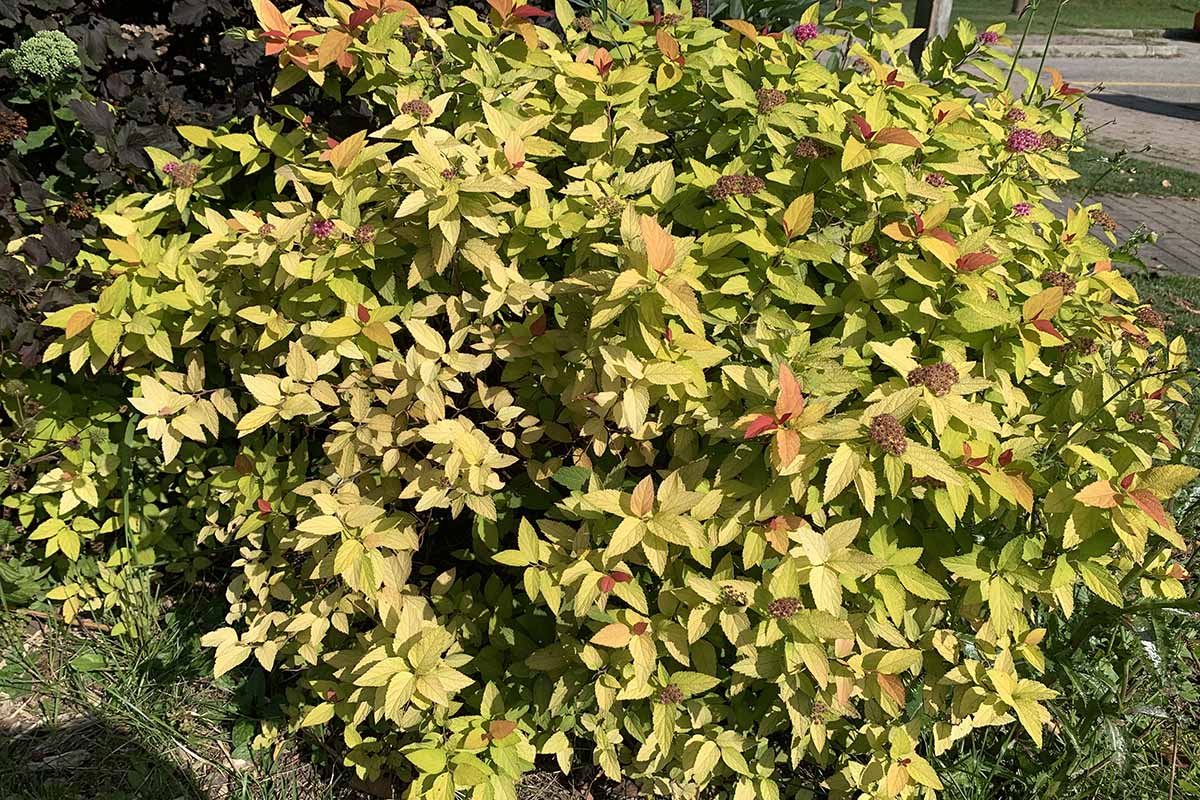
It’s a member of the Spiraea genus throughout the Rosaceae household. This plant generally goes by the frequent identify Japanese meadowsweet.
Japanese spirea is usually confused with different vegetation within the Spiraea genus, together with S. alba and S. tomentosa. Nonetheless, its distinctive leaf form, corymb construction, plus flower measurement and colours set it aside.
There are a selection of hybrids and cultivars of Japanese spirea accessible, every with its personal distinctive traits. Like different spireas, this species is hardy in USDA Zones 3 to eight.
It’s a flexible little quantity, rising two to 6 toes excessive and as much as seven toes extensive. With an upright and broadly mounded type, Japanese spirea creates dense thickets of skinny, wiry stems.
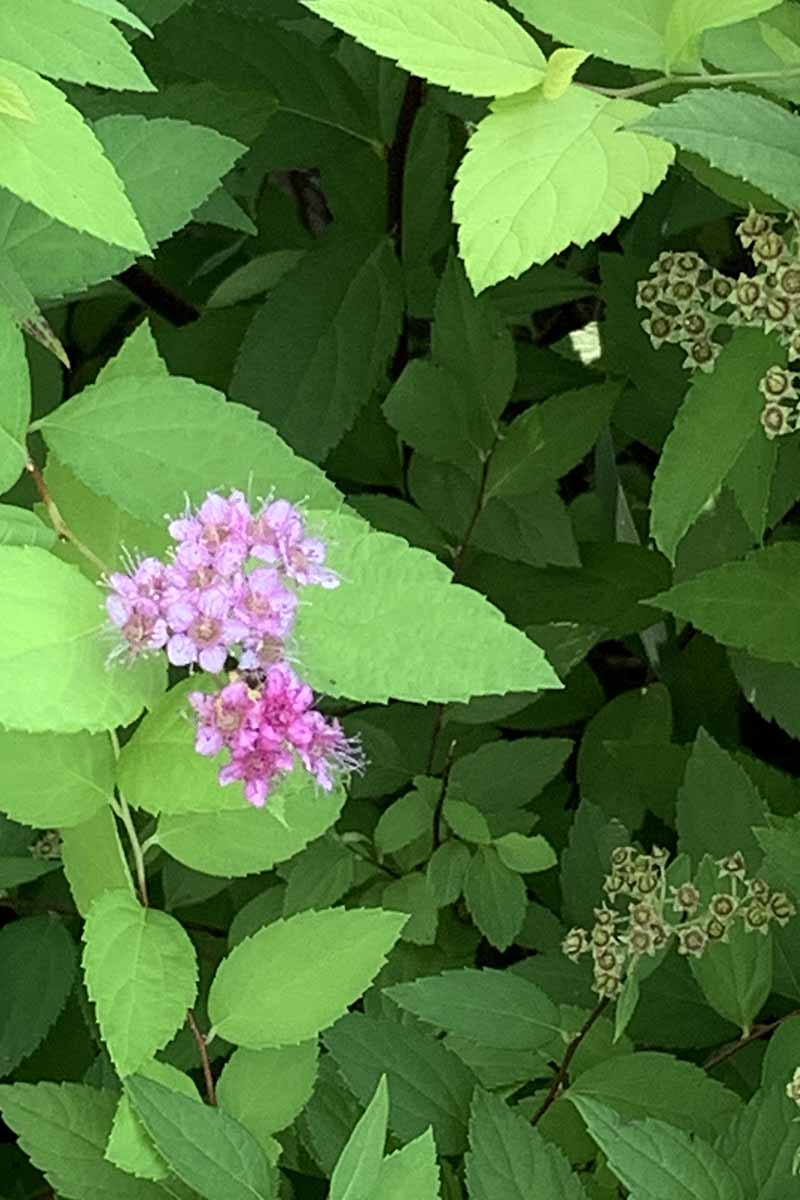
The plant is drought-tolerant as soon as established and blooms in early summer season with white, pink, or purple flowers that appeal to butterflies and different pollinators. It’s usually the final of the spirea bushes to bloom annually.
At its peak, Japanese spirea boasts a lush show of lustrous inexperienced leaves in numerous shades of golds and greens, one to 3 inches lengthy, with serrate margins.
The wiry, freely branching, erect stems are brown to reddish-brown, including to its visible attraction.
In fall, the leaves change coloration to gold, orange, or pink. In winter, the plant will lose its leaves, however nonetheless manages to look fabulous with its erect behavior and snow-catching branchlets. Come spring, it’s again in motion as a riot of coloration with new leaves and flowers.
Cultivation and Historical past
Japanese spirea was launched to america within the late nineteenth century, most probably someday between 1870 and 1890, as a decorative plant.
It shortly gained reputation in gardens and landscapes because of its hardiness, adaptability, and aesthetic attraction. It has naturalized in North America from New England down via the Appalachians, into Tennessee, Georgia, and Indiana, and in components of Canada.
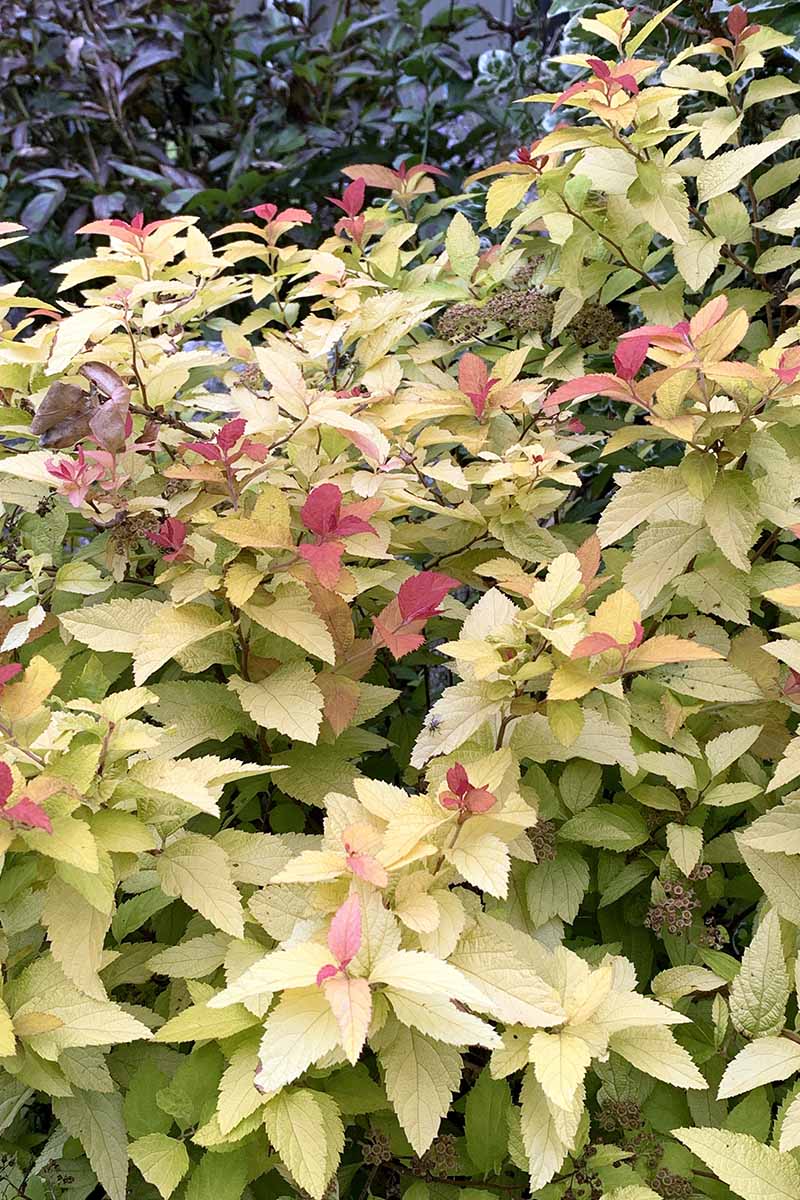
Nonetheless, its speedy unfold and talent to outcompete native vegetation has grow to be a priority in some areas of the nation.
In america, Japanese spirea has been recognized as invasive in a number of states, significantly within the Mid-Atlantic area. It thrives in a wide range of habitats, together with meadows, open woodland areas, and alongside waterways.
The plant’s invasive nature is attributed to its prolific seed manufacturing and quick progress charge, which permits it to shortly colonize new areas, displacing native flora within the course of.
To mitigate the invasive unfold of Japanese spirea, mechanical removing and herbicide remedies are generally beneficial by administration authorities. For individuals who nonetheless want to embrace this plant of their gardens, choosing sterile, non-invasive cultivars is suggested.
I’ll cowl just a few specifics afterward, however some sterile cultivars embrace ‘Crispa,’ ‘Dart’s Purple,’ ‘Neon Flash,’ and people within the Double Play® collection.
Japanese Spirea Propagation
Japanese spirea reproduces simply within the wild. One plant is able to producing a whole lot of seeds that may stay viable within the soil for years.
Rising the species plant from seed is simple, however this doesn’t imply it’s the most effective technique of propagation. It might take two years or extra for the plant to achieve a fascinating measurement in your panorama design.
You may accumulate seeds from your personal vegetation or buy from on-line distributors. Word that seeds collected from hybrids and cultivated varieties could also be sterile and won’t develop true to the guardian plant.
Place seeds between layers of damp paper towel till they sprout, then switch the sprouted seeds to soil. Or just floor sow and hold them moist till they sprout.
In business cultivation, this shrub is usually propagated through softwood cuttings. These cuttings could be rooted throughout the summer season. Moreover, hardwood cuttings could be rooted within the fall.
One other technique, often called layering, entails pegging down a department within the spring and potting it up within the fall as soon as roots are established.
To be taught extra about propagating spirea from cuttings and through layering, go to our information.
Spireas produce suckers. You may dig up these suckers and nurture them as particular person vegetation.
It’s additionally potential to divide a longtime spirea within the spring or fall to propagate new vegetation. In my very own expertise, dividing is a bit dangerous.
I’ve divided my very own Japanese spireas with about an 85 p.c success charge. Divisions, together with the guardian plant, can grow to be weakened within the course of, they usually at all times want time to bounce again, so proceed with warning.
You may be taught extra about the best way to divide perennials in our information.

The quickest and most dependable technique for busy residence gardeners, nonetheless, is to buy a potted Japanese spirea plant from a good grower and transplant it into your backyard.
Buying a container-grown shrub not solely ensures that you recognize what you’re getting – as propagating from cuttings and layering does – however the younger shrub will probably be just a few years older, wholesome, and prepped for achievement.
I’ll provide you with some recommendations on the place to buy later, however first let’s check out the transplanting course of.
Transplanting
Earlier than you seize your shovel, let’s cease for a second and speak about spacing. This shrub can develop as much as seven toes extensive at maturity, so give it some room to unfold.
Plan for 3 to 6 toes between your new shrub and its plant neighbors. Test the nursery tag for particular spacing necessities.
Spireas are straightforward to transplant. Begin by digging a gap as deep as your shrub’s root ball and about twice as extensive.
Though these shrubs can tolerate poor soil circumstances, why not attempt to give them their finest shot at a wholesome life?
Should you occur to have some natural materials like compost or well-rotted manure available, add a scoop into the planting gap. Should you don’t have it, no huge deal! Proceed with out it.
Should you’re transplanting a potted Japanese spirea shrub, take away it from its container and examine the roots. Loosen pot certain roots and trim any that look unhealthy or broken.
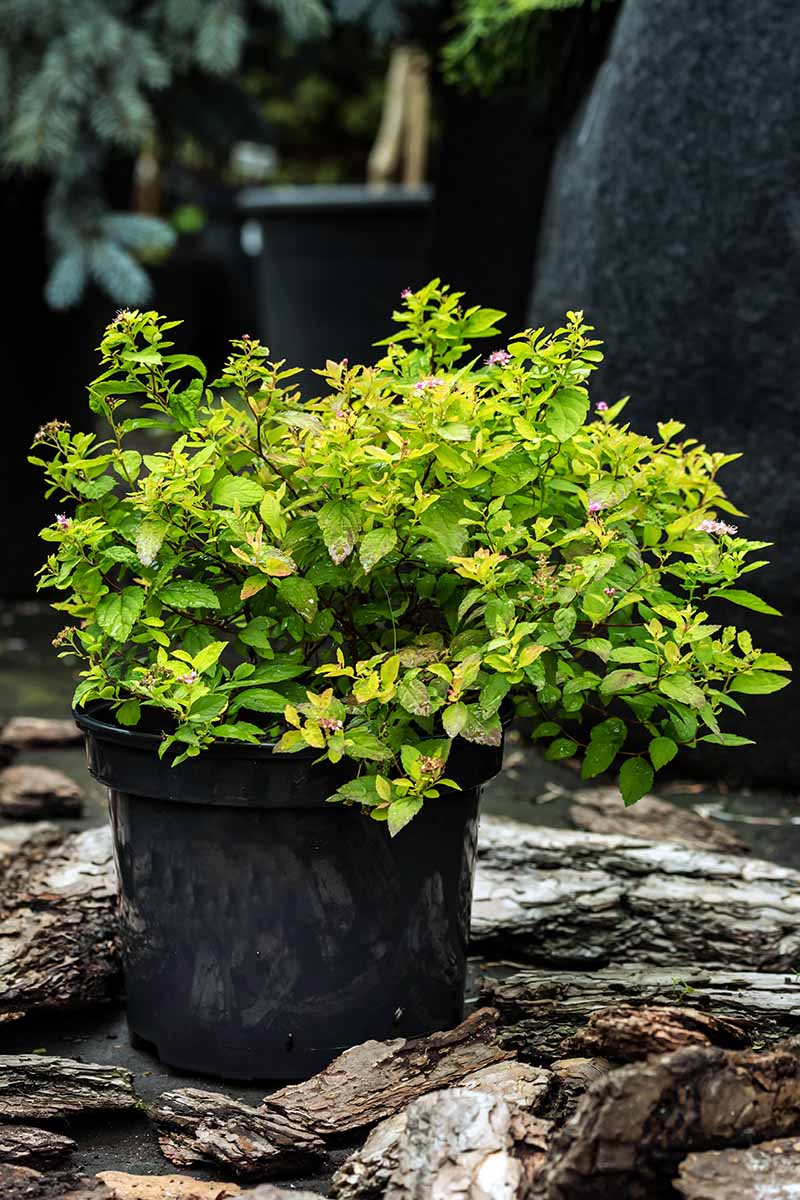
Within the case of a naked root shrub, examine it rigorously and trim any broken or diseased roots earlier than planting. Then make a small mound within the backside of the opening to help the roots.
Place the plant into the opening, guaranteeing that the highest of the basis ball is degree with the encompassing soil. In case your shrub has naked roots, gently unfold the roots out over the mounded soil.
Subsequent, backfill the opening with soil, gently tamping it down as you go to eradicate air pockets across the roots. As soon as the plant is securely in place, give it a great watering to assist settle the soil.
Add a layer of mulch, about an inch or two thick, on prime of the basis zone to retain moisture. Maintain the mulch just a few inches away from the stems. If mulch sits in opposition to the stems it will probably encourage illness.
The way to Develop Japanese Spirea
Now that you recognize simply how straightforward it’s to transplant a Japanese spirea, let’s focus on every little thing this shrub must develop to its full potential.
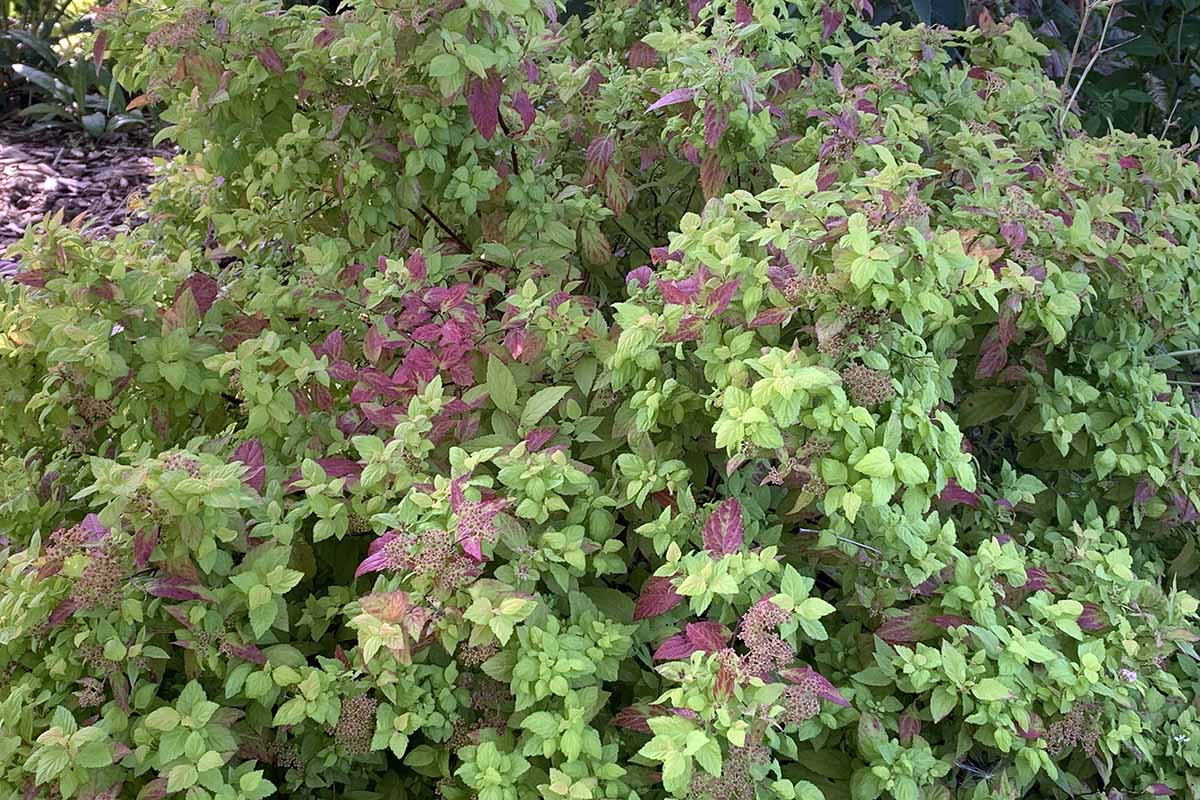
In relation to soil, S. japonica is mostly a forgiving plant. It thrives finest in moist, well-drained soils however can tolerate dry websites as nicely.
Whereas the soil pH ought to ideally be flippantly acidic to impartial – between 6.0 and seven.0 – Japanese spirea shouldn’t be overly choosy and might even tolerate barely alkaline circumstances.
I’ll be aware that in case you’re coping with extremely alkaline soils, you may discover some chlorosis, or yellowing of the leaves. Take a look at your soil and amend accordingly in case you discover this irregular discoloration.
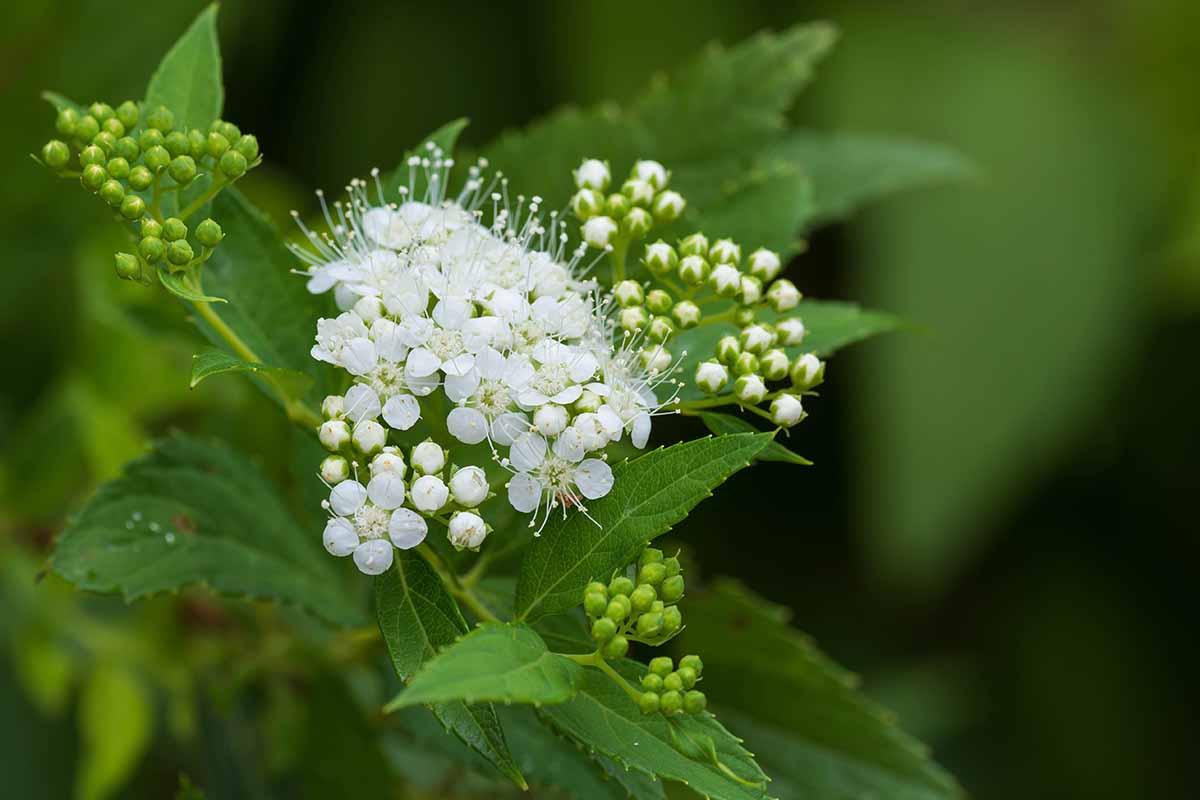
This species is hardy in USDA Zones 3 to eight, making it a flexible selection. It loves full solar however may also tolerate partial shade. So so long as we’re not speaking about deep shade, most areas in your property will accommodate these shrubs.
As for fertilizing, much less is extra. Japanese spireas don’t have excessive nutrient calls for. A balanced, slow-release fertilizer utilized in early spring will suffice.
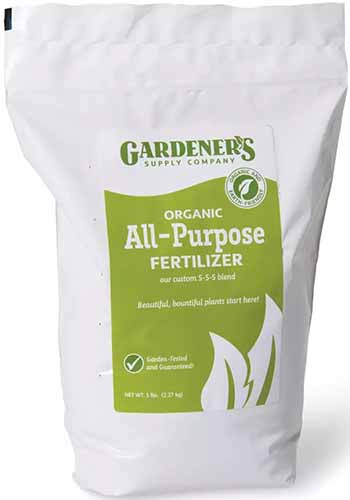
Gardener’s Greatest All-Function Natural Fertilizer
Should you’re searching for a advice, take a look at this granular fertilizer referred to as Gardener’s Greatest All-Function Natural Fertilizer accessible at Gardener’s Provide Firm. It’s accessible in one-, five-, and 25-pound packages.
It’s finest to err on the facet of warning as overfertilizing can harm these vegetation. Extra fertilizer may also disrupt wholesome microorganisms within the soil and enhance salt focus.
At all times learn and comply with the bundle directions rigorously.
Effectively-rotted manure additionally makes a great fertilizer whereas supporting and bettering soil well being on the identical time. Add a scoop to the soil on the base of every shrub within the spring and your vegetation will love you for it!
In relation to watering, this bush is reasonably drought-tolerant as soon as established, nevertheless it does recognize constant moisture, particularly throughout dry spells. Within the absence of normal rainfall, you’ll must complement with watering.
That stated, spirea shouldn’t be a fan of waterlogged circumstances, so well-drained soil is vital.
An excellent rule of thumb is to water deeply after which permit the highest two inches of soil to dry out between waterings.
This method encourages deeper root progress, making the plant extra resilient in the long term. So, no must hover with the hose; this shrub’s obtained a laid-back perspective about hydration.
One final be aware about watering: deciduous shrubs like spirea go dormant in winter. Throughout this time, vegetation don’t require as a lot water as they do throughout the rising season. However do you have to water in any respect?
Should you reside in a Zone the place the bottom freezes, chorus from watering throughout dormancy, as this will likely harm the roots.

Solely water if the temperature is above 40°F (4°C). If circumstances are dry, examine your soil and if needed, give your shrubs some water. This may be a few times a month.
Whether or not you’re a seasoned gardener or a beginner with a inexperienced thumb, S. japonica provides numerous flexibility.
It’s like that easy-going good friend who’s joyful to hang around wherever, at any time when. We might all use extra associates like Japanese spirea, couldn’t we?
Simply give it some solar, a little bit of area, and it’ll reward you with a vibrant show from spring to fall. All in all, Japanese spireas are comparatively low upkeep. I don’t learn about you, however I’ll take it!
Rising Ideas
Select a location with full solar to half shade.
Plant in well-draining soil.
Fertilize sparingly in spring with well-rotted manure or a balanced, slow-release fertilizer.
Water when the soil is dry two inches down and watch out to not overwater.
Pruning and Upkeep
Japanese spirea grows naturally in a considerably rounded form. In my expertise, nonetheless, it will probably grow to be a bit wild and unruly at instances. If you wish to tame the beast, think about pruning.
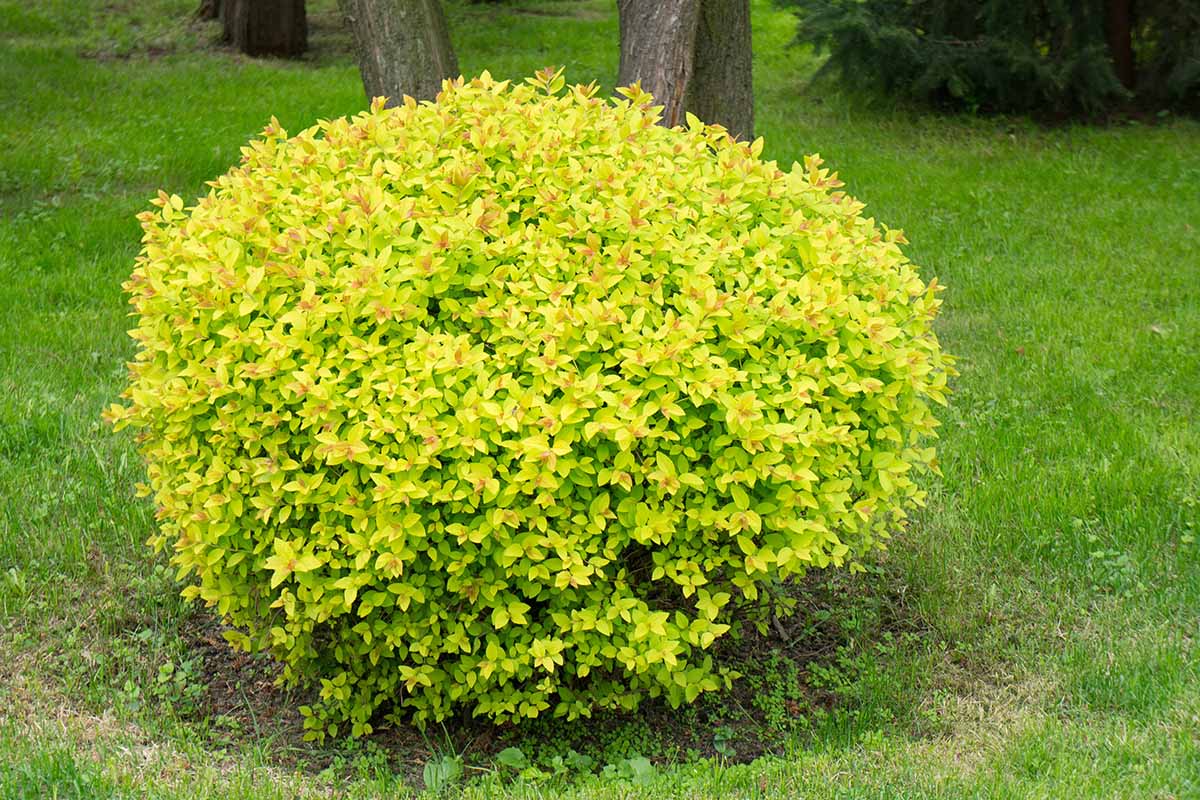
In relation to pruning spirea, timing is every little thing. The flowers type on new wooden, so intention to prune your shrub in late winter or early spring to manage its measurement and form.
One other opportune time for pruning is correct after the flowers fade. Deadheading spent flowers and a lightweight shear encourages colourful new progress and retains the shrub trying contemporary.
To make fast work of pruning, I like to make use of my Fiskars PowerGear2 Hedge Shears. The lengthy blades let me work swiftly and effectively as I form my shrubs.
Fiskars PowerGear2 Hedge Shears
Yow will discover these shears accessible at Amazon.
Lifeless and broken branches ought to be eliminated in late winter or early spring. It’s also possible to take away the oldest, woodiest stems each couple of years to rejuvenate the plant.
Selectively clip these near the bottom of the plant. This can assist keep a naturally rounded behavior with out a lot effort.
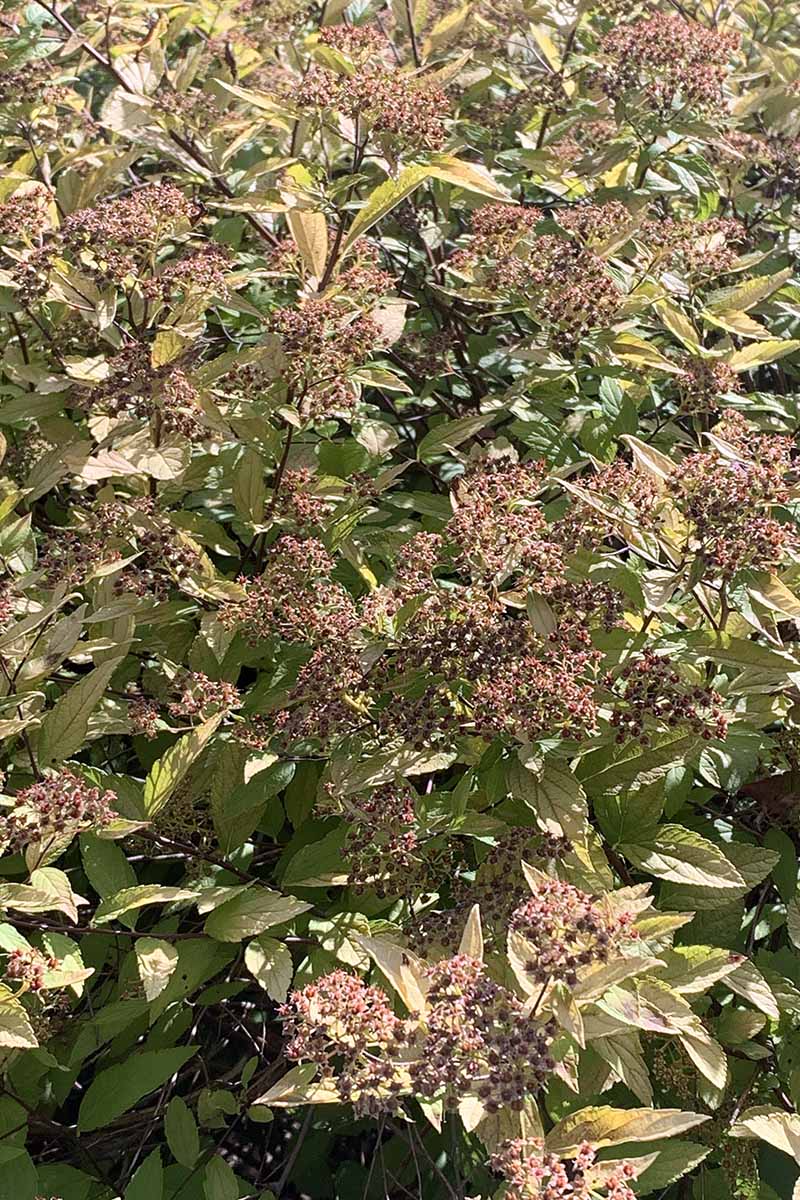
If you wish to hold your spirea compact, you possibly can decide to trim the entire shrub again extra aggressively. You may minimize the entire plant again by 30 p.c, or you possibly can take all of it the best way to the bottom.
Simply keep in mind that it is best to solely try this whereas the plant is dormant in late winter or early spring.
Should you’re dramatically decreasing the dimensions of your shrub, it would want a while to get well.
Keep away from this selection in instances of extreme drought as it would place pointless stress in your plant because it makes an attempt to get well, and bear in mind to take care of constant moisture.
Learn our information to pruning spirea for full particulars.
One other upkeep level to contemplate is mulching. Mulching serves a twin goal: it helps retain soil moisture and suppresses weeds.
This not solely retains the soil moist but in addition provides a neat, completed look to your planting space, and provides safety for the roots in excessive chilly winters.
Go to our information for extra particulars about caring in your spirea throughout the winter.
It’s also possible to add a contemporary layer of mulch within the spring to offer your backyard a tidy look and put together it for the rising season.
Japanese Spirea Cultivars to Choose
Are you falling in love with Japanese spirea and desirous about including a number of to your panorama design?
Since this species is taken into account invasive in some states and provinces, examine earlier than making your resolution to buy. There are many cultivars to select from, together with ones which are sterile.
Let’s check out just a few choices!
Crispa
‘Crispa,’ or crisp leaf spiraea, is a sterile hybrid cultivar with magnificent scorching pink flowers and darkish inexperienced leaves which are twisted and crinkled.
Leaves flip beautiful shades of bronze in autumn. The distinctive foliage provides a change of texture to planting beds.

‘Crispa’
Its quick stature of two to 3 toes tall and extensive make it a compact selection for borders and rock gardens. This cultivar thrives in Zones 4 to eight.
Discover it at Nature Hills Nursery.
Double Play Sweet Corn
Double Play® Sweet Corn® is a enjoyable dwarf Japanese spirea that gives a colourful show, not just for trick-or-treat time, however all year long.
This compact shrub reaches a peak of 18 to 24 inches and a width of 18 to 30 inches, making it best for small areas and containers.
It begins the rising season with pink leaves that mature to golden yellow and finally flip pumpkin orange.
Deep pinkish-purple flowers bloom from spring to early summer season, including one other layer of coloration. This cultivar is hardy in USDA Zones 4 to 7.

Double Play Sweet Corn
Don’t watch for Halloween to plant this candy deal with! Double Play® Sweet Corn® could be bought from Planting Tree.
Double Play Doozie
Double Play® Doozie® is one other sterile cultivar, so you possibly can relaxation assured it won’t escape your backyard.
In spring the leaves open to an excellent pink coloration earlier than turning lush inexperienced, then on to copper and gold in fall. Blooms explode in shades of wealthy purple-red from early summer season and proceed till first frost.

Double Play Doozie
This shrub tops out at three toes tall and is suited to Zones 3 to eight. Test it out at Nature Hills the place it’s accessible in #3 containers.
Neon Flash
‘Neon Flash’ is one other sterile cultivar. It bursts onto the spring scene with flashy reddish-pink flowers. Foliage emerges pink, earlier than turning inexperienced, then transitions to shades of burgundy in fall.
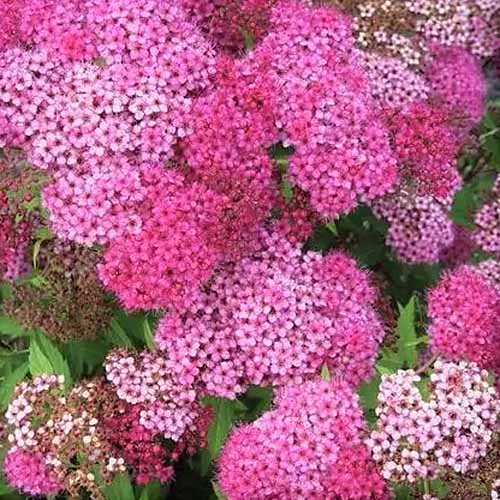
‘Neon Flash’
This bush reaches as much as three toes tall and extensive and you may develop it efficiently in Zones 4 to eight.
Nature Hills carries ‘Neon Flash’ in #1 containers in addition to one- to two-foot naked root vegetation.
Magic Carpet
Magic Carpet spirea, aka S. japonica ‘Walbuma,’ is a compact, spreading cultivar that provides a splash of coloration to any backyard.
Its younger shoots and leaves begin off pink and mature to numerous shades of gold relying on the sunshine circumstances.
In full daylight, the mature leaves flip golden, whereas in partial shade, they tackle a greenish-gold hue. The shrub produces clusters of vivid pink flowers, making it a vibrant addition to your backyard.
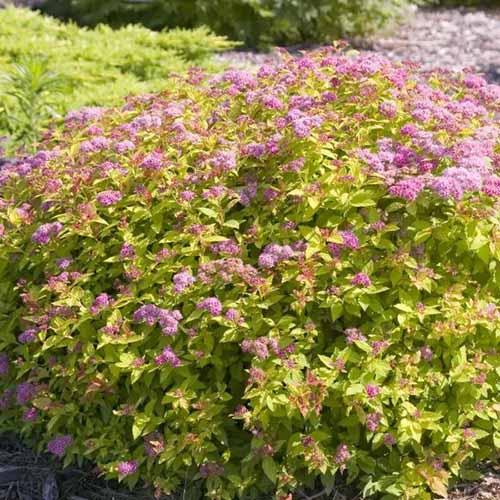
Magic Carpet
It’s well-suited for Zones 3 to eight and reaches a peak of 1 to 2 toes with a variety of two to 3 toes. Word that this cultivar shouldn’t be sterile and can produce viable seed.
Hop on for a journey! Yow will discover Magic Carpet accessible as one- to two-foot naked roots and in #3 containers at Nature Hills.
Be taught extra about rising magic carpet spirea in our information. (coming quickly!)
Managing Pests and Illness
Japanese spirea aren’t typically bothered by pests and illnesses. Though it might be unlikely, in case you discover any herbivores munching in your shrubs chances are you’ll wish to take precautions similar to putting in deer-resistant fencing.
I at all times suggest a holistic first method when coping with bugs and illness within the backyard. This begins with preventative practices together with good hygiene and sanitation, correct watering strategies, and biodiversity to encourage helpful predatory bugs.
Let’s check out some frequent pests and illnesses that may harm your shrub:
Bugs
It’s essential to keep in mind that bugs could be answerable for introducing disease-causing pathogens, so realizing what to be careful for is vital to maintaining your vegetation wholesome.
Listed below are the principle bugs to concentrate on:
Aphids
Aphids are small, soft-bodied bugs which are recognized for sucking plant sap. The spirea aphid, Aphis citricola, is the actual species that targets spirea vegetation.
When aphids assault, they trigger the leaves to twist, and may also result in the event of sooty mould as a consequence of their secretion of honeydew.
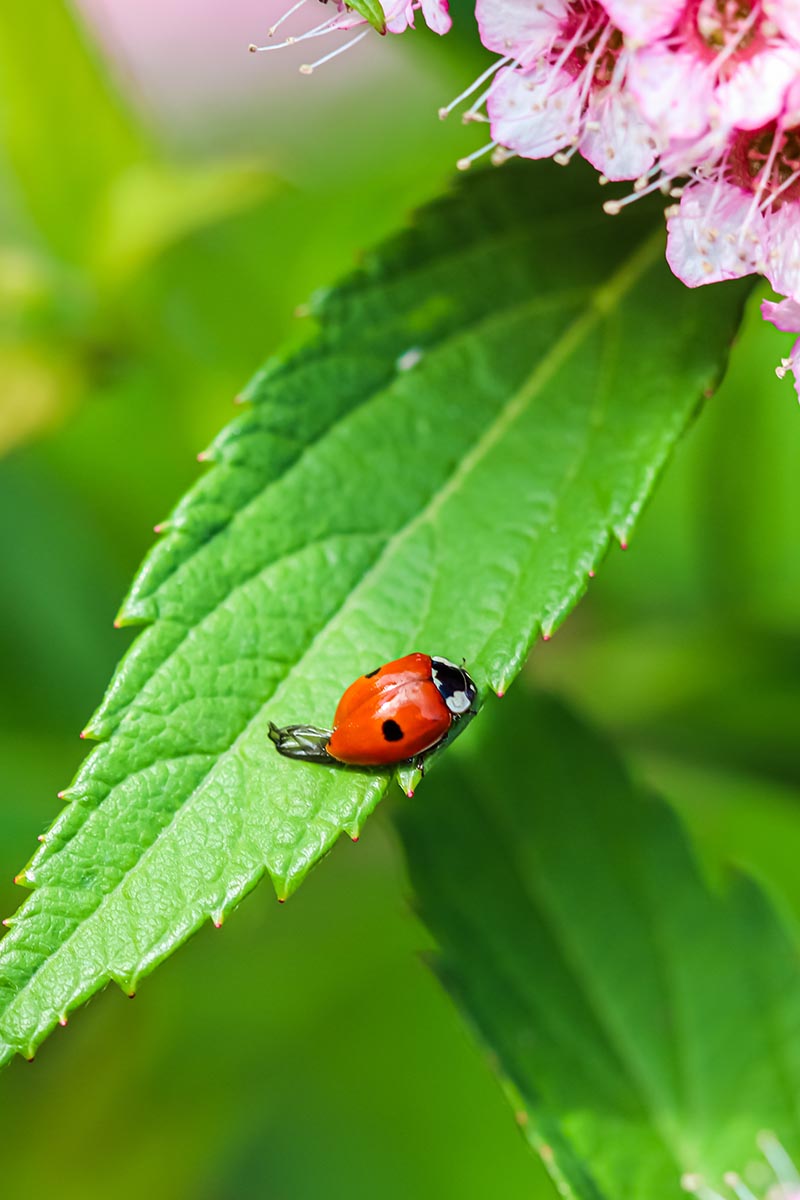
To manage aphids, you need to use sprays of insecticidal cleaning soap or neem oil. Organic controls just like the introduction of ladybugs will also be efficient in maintaining aphid populations in examine.
Be taught extra about the best way to handle aphids in our information.
Leaf Rollers
Leaf rollers are literally caterpillars, the larvae of tortrix moths, they usually use leaves as a type of safety, rolling them round themselves whereas they feed.
This causes the leaves to twist and might finally result in defoliation if not addressed.
To handle leaf rollers, an insecticide containing the helpful micro organism Bacillus thuringiensis (Bt) could be efficient.
Organic management strategies additionally embrace the introduction of pure predators like tachinid flies, ichneumonid wasps, lacewing larvae, and murderer bugs. Handbook removing can be an choice in case you choose a hands-on method.
Scale
Scale bugs are small and motionless, attaching themselves to the stems and leaves of vegetation. They suck sap from the plant, which may weaken it and result in the yellowing of leaves.
To deal with scale, horticultural oils could be efficient, particularly when utilized throughout the bugs’ cell crawler stage.
Pure predators like parasitic wasps and girl beetles may also assist to scale back scale populations. Handbook removing is an choice, together with pruning of closely infested stems.
Be taught extra about scale bugs in our information.
Illness
There are just a few illnesses that may goal your Japanese spirea. Let’s examine signs and therapy choices.
Grey Mould
Grey mould, brought on by the fungus Botrytis cinerea, is a illness that may have an effect on varied components of the Japanese spirea plant, together with stems, buds, flowers, and leaves.
The illness manifests as a grayish internet of mycelium on the affected tissue, particularly when humidity is excessive. Signs could differ relying on the plant components attacked and rising circumstances.
To handle grey mould, it’s essential to manage the surroundings by avoiding overhead watering, bettering air circulation, and making use of fungicides as wanted.
Deadheading spent flowers and eradicating all contaminated plant tissue are additionally beneficial.
Fireblight
Fireblight is a bacterial illness brought on by Erwinia amylovora, generally affecting apples, pears, and associated species like Japanese spirea. The illness manifests as wilting and blackening of leaves, making them seem as if scorched by fireplace.
One of the attribute signs is the curling of affected shoots into “shepherd’s crooks.”
To handle fireblight, it’s important to prune out contaminated branches, ideally throughout winter dormancy.
Bactericidal sprays like copper sulfate can be utilized throughout the bloom interval, and in case you’re coping with a closely contaminated plant it’s finest to take away it out of your backyard and eliminate it within the trash to keep away from any potential unfold.
Powdery Mildew
Powdery mildew is a typical fungal illness that manifests as white to grey powdery spots or blotches on the leaves, stems, and buds of the Japanese spirea.
The illness is usually most extreme on younger leaves and inexperienced shoots. Whereas it doesn’t considerably hurt the well being of the plant, it will probably have an effect on its look.
To handle powdery mildew, think about cultural management practices like planting in full solar and removing and disposal of fallen leaves. Correct spacing and avoiding extreme fertilization may also assist in controlling the illness.
Be taught extra about the best way to deal with powdery mildew in our information.
Root Rot
Root rot in Japanese spirea could be brought on by fungi similar to Phymatotrichopsis omnivorum and water molds within the Phytopthora genus.
Root rot is most prevalent in soils which are poorly draining, compacted, and in areas the place water collects and stands. It may be compounded when uncovered to excessive summer season temperatures.
Signs usually seem from June via September when soil temperatures attain their peak. Affected vegetation could show wilted leaves that flip brown however stay hooked up.
The roots of contaminated vegetation will grow to be severely decayed and could also be coated by a fuzzy, tan-colored mould.
Chemical remedies haven’t been profitable in controlling a sophisticated case of root rot.
Prevention is vital, so select the planting location correctly. If root rot takes over, it is best to take away and eliminate the affected plant. Keep away from planting the identical species in the identical location.
Verticillium Wilt
Verticillium wilt is a soil-borne illness brought on by the fungi Verticillium albo-atrum and V. dahliae. It will possibly have an effect on a variety of vegetation, together with Japanese spirea. The fungi infect the plant via the roots and disrupt water and nutrient circulation.
The illness manifests as wilting, yellowing, and browning of the leaves, usually beginning on one facet of the plant. Because the illness progresses, total branches could die again.
Administration of verticillium wilt is difficult as soon as a plant is contaminated. If an infection happens, pruning out affected branches may help handle the illness, nevertheless it’s troublesome to eradicate solely.
The very best method is preventative. Sanitize backyard instruments, encourage good soil and plant well being through moisture administration and air circulation, and keep away from planting inclined species in beforehand contaminated areas of your backyard.
Greatest Makes use of for Japanese Spirea
Japanese spirea is a “jack-of-all-trades” – versatile, sturdy, and oh-so-charming.
With a plethora of cultivars to select from, you’re not simply including one other plant to your backyard – you’re including a character!
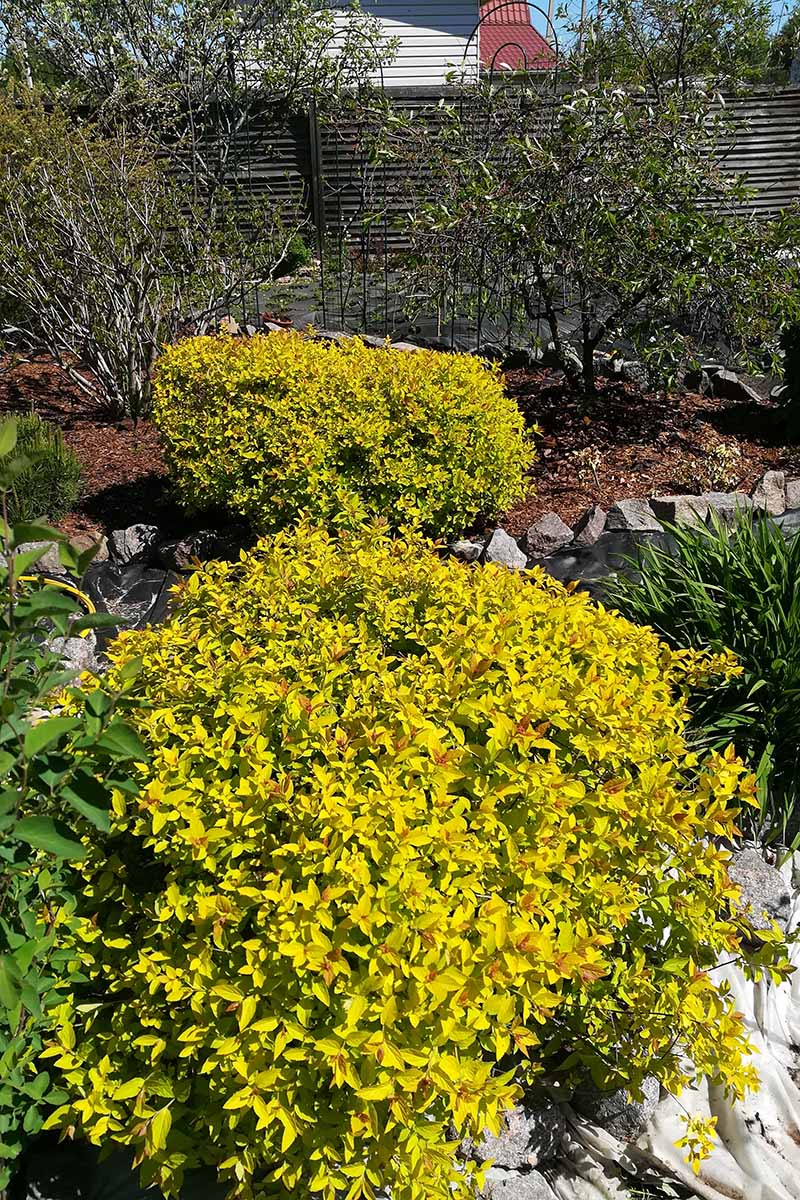
Nevertheless it’s not solely about its character; this shrub is a multitasker. Use it as a border to outline your backyard areas or as a basis planting to offer your house that welcoming, lived-in look.
It’s additionally a favourite for mass plantings and specimen focal factors, the place its seasonal adjustments – from spring’s first buds to fall’s fiery hues – can really shine.
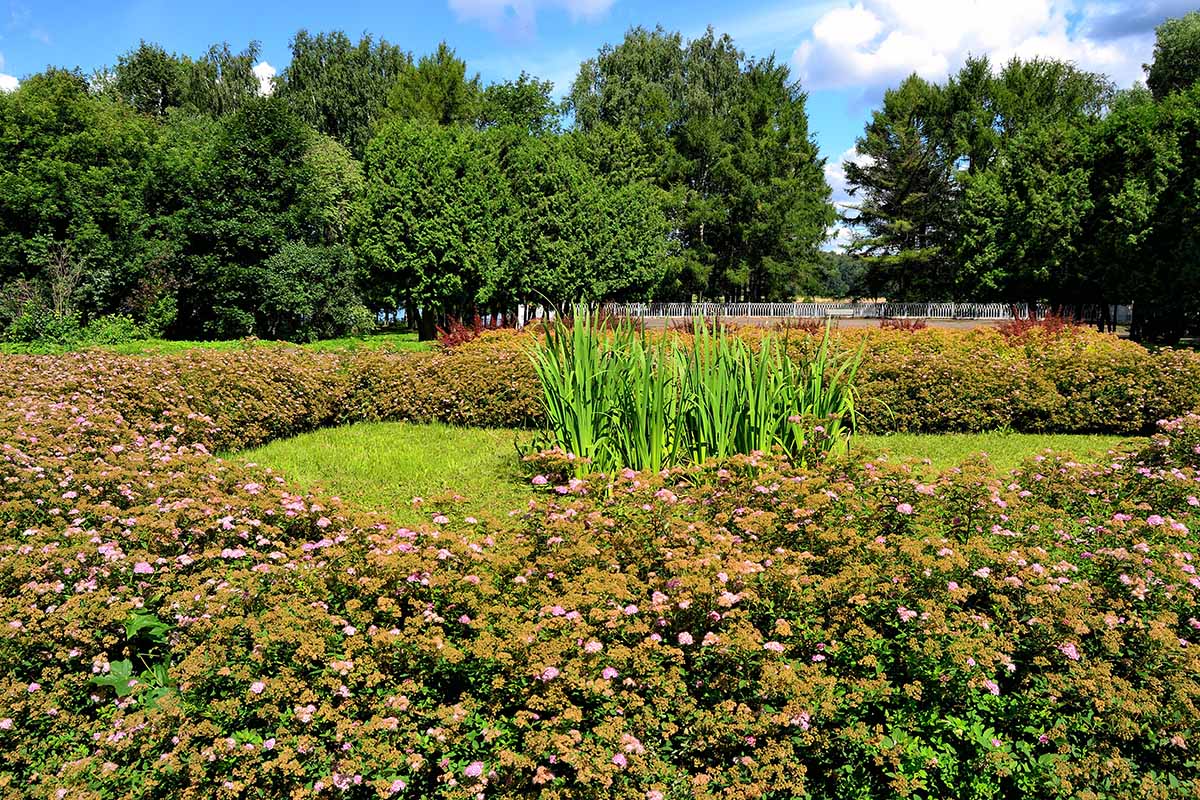
And let’s not neglect the winter curiosity; even when the leaves have fallen, the intricate branching sample provides a contact of drama to a snowy panorama.
So go forward, let your creativity run wild and make Japanese spirea the star of your backyard stage!
Fast Reference Rising Information
Plant Kind:Deciduous perennial flowering shrubFlower / Foliage Coloration:Pink, purple, white; yellow, inexperienced, chartreuse
Native to:China, JapanMaintenance:Low
Hardiness (USDA Zone):3-8Tolerance:Air air pollution, deer, drought, erosion, mild shade, poor soil
Bloom Time/Season:Spring, summerSoil Kind:Loamy
Publicity:Full solar to half shadeSoil pH:6.0-7.0
Spacing:3-6 feetSoil Drainage:Effectively-draining
Planting Depth:Similar depth as container (transplants)Attracts:Bees, butterflies
Peak:2-6 feetCompanion Planting:Barberry, coral bells, grasses, hydrangea, rhododendron, sedum, weigela
Unfold:4-7 feetUses:Border, basis planting, hedge, mass planting, rock backyard, specimen
Development Price;FastFamily:Rosaceae
Water Wants:LowGenus:Spiraea
Pests & Ailments:Aphids, leaf rollers, scale; grey mould, fireblight, powdery mildew, root rot, verticillium wiltSpecies:Japonica
A Backyard Gem
Implausible! We’ve come a good distance, haven’t we? From understanding the ins and outs of Japanese spirea to navigating its numerous cultivars, we’ve dug deep – actually and metaphorically – into this backyard gem.
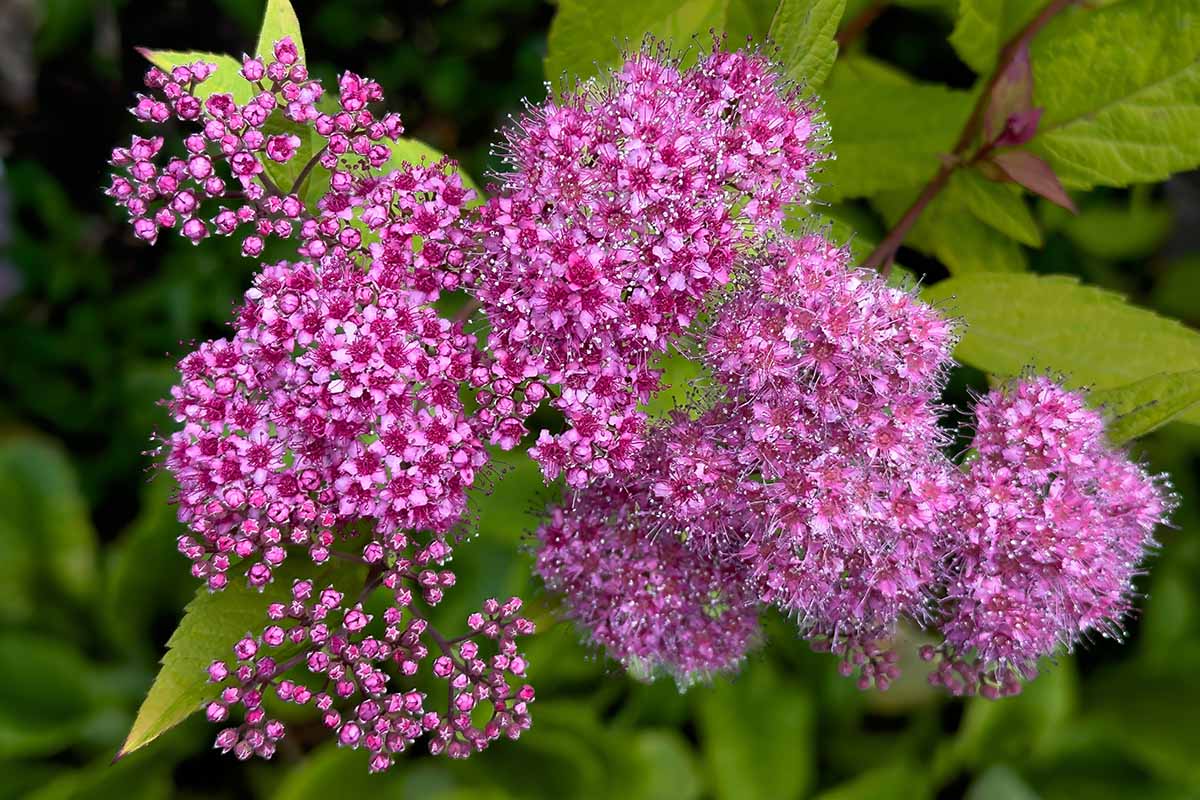
We’ve tackled its historical past, its likes and dislikes in soil and local weather, and even the best way to hold it wholesome and pest-free. And now we’re all educated on the potential for this plant to grow to be invasive in some areas, do your homework earlier than planting, of us!
As you intend your subsequent planting, bear in mind this shrub’s forgiving nature and versatile magnificence. It’s virtually begging to be the latest member of your backyard household.
Received questions or your personal spirea tales to share? We’d love to listen to from you within the feedback under.
And for extra details about rising spirea in your backyard, take a look at these guides subsequent:
Pictures by Tabitha Caswell © Ask the Specialists, LLC. ALL RIGHTS RESERVED. See our TOS for extra particulars. Product photographs through Fiskars, Gardener’s Provide Firm, Good Vegetation Nursery, Planting Tree, and Nature Hills Nursery. Uncredited photographs: Shutterstock.
[ad_2]
Supply hyperlink
